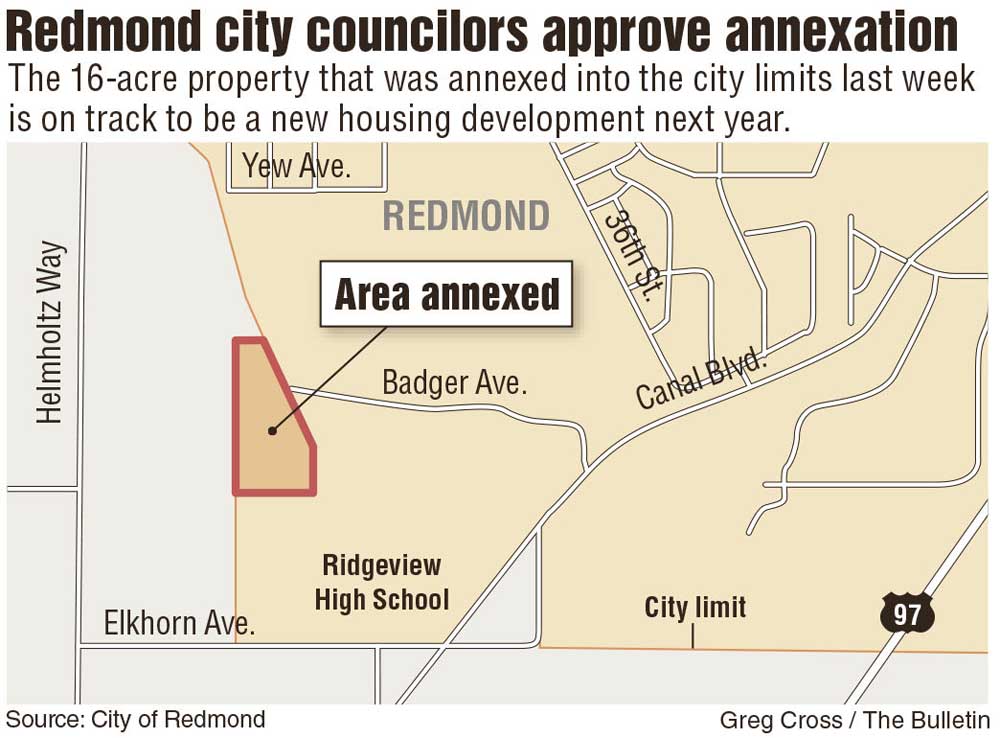Homebuilders say ‘no’ to Redmond code changes
Published 12:00 am Friday, December 30, 2016

- Homebuilders say ‘no’ to Redmond code changes
As residential development continues to boom in Redmond, the city wants to amend its code so it can have more control over what future neighborhoods will look like.
Homebuilders, however, say the proposed changes are too restrictive and would raise construction costs. They are coming out against one amendment in particular: a code change that would require new homes be constructed “alley-loaded,” or built alongside an alley so the garage and driveway aren’t in the front of the house.
The requirement may seem like a technical detail to some, but it has sparked pushback from members of the Central Oregon Builders Association, which represents developers. The group sent Redmond City Council a letter last week requesting the requirement’s removal.
“COBA, which represents 630 member companies, doesn’t support the requirement of alley-loaded lots — period,” Katelyn Pay, COBA’s director of government affairs, said.
Developers said that alley-loaded houses cost more per square foot to produce because they have to be built on a more narrow foundation. And because these homes are typically designed for high-density areas, they usually have to be higher than one story, further raising construction costs. Meanwhile, alley-loaded homes don’t sell as well as traditional homes with a garage and driveway in front, creating a situation in which a house that costs more to build sells for less, said Geoff Harris, regional director for Hayden Homes in Bend.
“It’s always more expensive per square foot to build alley product,” Harris said, adding that beyond raising construction costs and the price of homes in a city that’s in the middle of a housing crunch, the requirement for alley-loaded homes would also contradict the city’s goal of having a variety of housing.
“The stated goal from council members has been to create more of a mix of housing types in Redmond. Including a line item that prefers a single type of housing unless you get a variance seems counterintuitive,” he said.
The city, however, is looking for a way to address a common problem it says it faces in many of its recently approved housing developments: concrete-heavy neighborhoods that aren’t pedestrian-friendly. And with residential construction in Redmond continuing to grow, Planning Director Deborah McMahon said it’s important to tighten outdated development code language that’s too permissive.
“You can go to different subdivisions and see they get crammed in like this pretty quick — driveway after driveway,” she said. “It’s not what we want, and on the smaller lots it really detracts what we’re trying to accomplish with our neighborhoods. If the code language is permissive — meaning it uses ‘should’ or ‘encourage’ — then people won’t always do what’s encouraged. Most of the master plans we’ve approved this year have been for non-alley loaded homes.”
McMahon said that eight subdivision master plans have been approved in 2016, and just last week city councilors voted to annex a 16-acre property into Redmond’s city limits that is on track to become a housing development next year. According to Community Development Department records, 197 residential building permits were issued for new single-family homes last year — the most since 2007. Planning permit activity last year — which speaks to future growth — saw a 500 percent increase from 2014.
“We are having to approve designs where driveways are very close together and the lots are very small,” McMahon said. “There’s very little space that’s not concrete and the walking surface is interrupted by numerous driveways. The short answer is yes, we’ve had significant problems, and by having alleys as a required feature we would be producing better neighborhood designs.”
The alley issue inspired a lengthy discussion during last week’s city council meeting. Instead of approving the amendments, councilors voted to leave open a public hearing until late January so discussion of the pros and cons could continue.
“There’s a lot here,” said Councilor Jay Patrick. “I’m not ready to vote on it.”
Now the development code amendments will receive another look from the city’s planning commission, which already voted to nix the alley-loaded requirement from the proposed changes at a meeting last month. Bill Hilton, a commissioner, said that developers and city staff will all get another chance to weigh in on the changes at the commission’s January meeting.
Harris, who noted that Hayden Homes has had a productive relationship with the city of Redmond, said he looks forward to the discussion. The city has a tendency to implement code requirements that aren’t necessary to home construction in order to control neighborhood aesthetics, he said, and such issues have come up before.
In 2013, homebuilders pushed back when Redmond changed its development code to add design standards for new homes. The goal of those code changes was to target features that might add to the positive perception of Redmond neighborhoods, things like street trees, screening mechanical equipment from view, and variety in home styles and architectural details.
“That was the first time when we began to really engage with (the city),” Harris said. “We spent quite (a) bit (of) time on that, and I understand what they’re trying to do. But Redmond has a more complicated architectural review than any city I’ve worked with in the Northwest.”
— Reporter: 541-617-7829,
awest@bendbulletin.com






